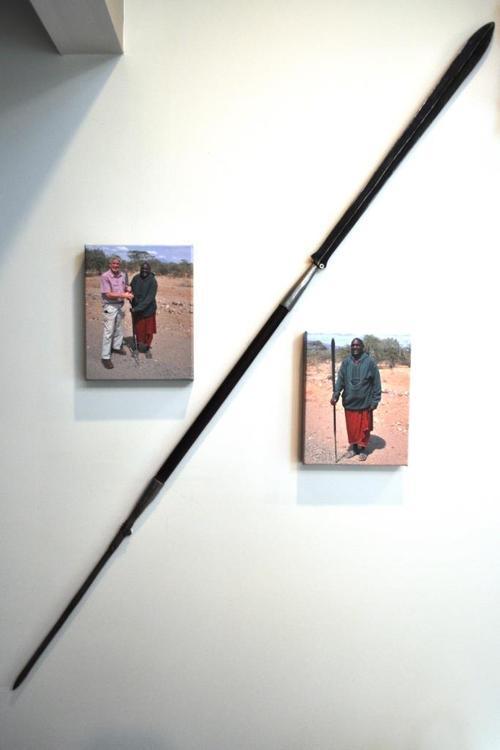Advancing in Visual Ethnography
I approached my reading of the text Doing Visual Ethnography by Sarah Pink from the perspective of a student being introduced to a whole new area of learning. My writing review, in the first person, reflects the nature of a new area of study. The book provides a comprehensive guide to understanding and creating visual images for ethnographic research.
In reading the book, I had to locate myself in both of these areas: a creator of visual images and an ethnographic researcher. The author clearly makes this distinction throughout the text. A review in the introduction portrays the amalgamation of ethnography and the visual image over the last several decades (loc.54). It is difficult for one to “take in” all of the study, research, writing, and new technology in this relatively short span of time; it is clear, however, there has been a progression of the acceptance and use of image in ethnography. This parallels the presence of image and its rise to prominence in all areas of society; family, business, commercial, and academic. This is an outcome of the “postmodern turn” (loc.75) allowing for openness to ideas, creativity in new methodologies, and, perhaps foremost, “visual ethnology [becoming] as much an applied as an academic practice.”
The author indicates the book is primarily for ethnographers wanting to incorporate visual image into their research. I have not produced nor been involved in an “ethnographic research project.” In the same manner, at the most I would be considered an amateur in any kind of visual production; I have a “point and shoot” camera and video recorder. However, I have served in cross-cultural ministry and it has been incumbent upon me to return home and “tell the story.” The practices and methods in the text are applicable even in this kind of a situation. I understood the need to be culturally sensitive in taking photos/videos while wanting to be able to share the story and knowing I really “needed’ the photo. I remember well taking a photo of a Maasai herdsman with his cattle; he came to the fence which divided our property and demanded payment. It was a difficult situation accentuated by the fact that he spoke the language of the Maasai, not Swahili and I could not even communicate. Or, the group of boys who saw my camera and begged for a photo; I resisted but finally relented. The moment I showed them the digital image, they all stuck out their hand for payment. Although I was not doing research in my cross-cultural ministry, all of the informational guidelines and procedures that Pink presents are applicable and appropriate.
I did, of course, take many appropriate photos. I once bought a “real” spear from a Maasai warrior. I have attached a photo of the spear and my picture with the Maasai which now hangs on the wall in my study. He was so pleased with the sale (I used a Tanzanian team member to negotiate the price) that there was no hesitancy in his allowing the picture. I gleaned concepts on every page of the text that help in understanding the aspects of telling the story and how essential proper methodology will be in my research project. I have taken thousands of photos and I don’t know what I have or how to find what I want; I just know I have that photo somewhere! I have read chapter five twice and I will return again to better apply concepts of classifying and interpreting the visual materials. Doing Visual Ethnology is more than a text; it is a resource.
There are a number of concepts that are significant for me at this point:
Ethnographic Research: Pink presents a really good definition and application of ethnography. It is clearly more than observing and interviewing in a cultural context. It is a contextual culture experience seeking knowledge that is interpreted and presented using appropriate methods, principles, and disciplines (loc.452). This is very basic but I will come back to this again and again.
Reflexivity: This is an intriguing concept and one that the author uses repeatedly. In fact, Pink states the text is based on “what I call ‘reflexive’ approaches to the visual in ethnography” (loc.132). A reflexive approach acknowledges the subjectivity and the impact of the ethnographer on those participating as informers and/or on the context in which research is taking place.
Methodologies: The methods used in a specific research situation should fit the context. There are multiple ways in which an informer can participate. They can indicate appropriate images; clarify verbally/descriptively what an image represents in a cultural context; or participate in actually creating the image. For an example; in discussing the context of “inside the domestic interior” (loc.576), the researcher captured in both word and photograph what this meant to a homeless person. The informer took a photograph of the cardboard litter. In using the informer in this context the ethnographer captures the reality for the homeless: “…cardboard is so close to you it could almost be a person” (loc.60).
Visual Culture: The author illuminates a multidimensional concept of visual culture. “…more than material objects or the ‘visible aspects of culture’; it must also include the visible-ness of ‘imaginations and conversations’” (loc.623). This concept causes one to question how we visualize culture. Pink notes that this concept changes our perspective and goes on to further clarification: “material objects are unavoidably visual, but visual images are not, by definition, material” (Kindle Location 652, emphasis mine).
These and many other concepts will continue to inform me as I pursue visual ethnography, beginning with the “Advance Experience.”

Leave a Reply
You must be logged in to post a comment.